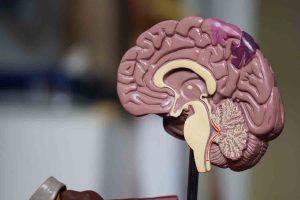Photo by Robina Weermeijer on Unsplash
CSF analysis in the laboratory
Cerebrospinal fluid (CSF) analysis is a way of looking for conditions that affect your brain and spine. It’s a series of laboratory tests performed on a sample of CSF.
A CSF sample is commonly collected by performing a lumbar puncture, which is also known as a spinal tap. An analysis of the sample involves :
measurement of the physical characteristics and appearance of CSF like observing the fluid colour
measuring the fluid pressure and counting
Measuring the glucose levels,
Measuring the proteins,
Identifying red blood cells
Identifying white blood cells,
chemical tests on substances found in your spinal fluid or comparisons to levels of similar substances found in your blood
cell counts and typing of any cells found in your CSF
identification of any microorganisms and other invasive organisms or foreugn substances that could cause infectious diseases
culturing the fluid.
Recommended: Cerebrospinal fluid (CSF): Meaning, production, circulation and function
What is it used for?
CSF analysis may include tests to diagnose Infectious diseases of the brain and spinal cord, including:
- meningitis and encephalitis.
See article on meningitis
- Autoimmune disorders, such as Guillain-Barré Syndrome and multiple sclerosis (MS). CSF tests for these disorders look for high levels of certain proteins in the cerebrospinal fluid. These tests are called albumin protein and igG/albumin.
- Bleeding in the brain
- Brain tumours
NOTE; CSF analysis is better than a blood test when trying to understand one’s central nervous system even though it’s relatively more difficult to obtain a CSF sample compare to the blood sample. To collect A CSF sample you need to have. Great background knowledge of your anatomy
how to collect CSF sample
HOW TO PROCESS CSF SAMPLE IN THE LABORATORY
First of all, you are expected to get 1.5-2mls of CSF sample
Note: CSF sample should be processed within 1hour after collection or it should be inoculated into Trans-isolate(T-I) medium for transport to the laboratory if processing within 1hour is not feasible. And do not refrigerate or keep in cold. You can put it in an incubator(37°c)
So when the sample finally gets to the lab, the following are carried out;
-
Macroscopy
Is it clear and colourless? Slightly blood-stained or heavily? Turbid? Etc.
NB: Xanthochromic means slightly yellowish and this could mean that there is Red blood cell but the red blood cells are not important.
PS: If there is blood it is either due to trauma in the brain or poor collection. But in order to be sure which; you could centrifuge it. If there is hemolysis(i.e the breakdown or rupturing of the red blood cell) then it is due to trauma but when you centrifuge and it separates properly(no hemolysis) then it’s due to a poor collection.
-
Wet Preparation
- Wet preparation is done to look for pus cells and yeast.
NB: Wet preparation is taken from the original sample. It involves placing a drop or loopful of the original sample on a clean grease-free glass slide and covered with a coverslip.
- If pus cell is less than 5; it’s insignificant
If pus cell is greater than 5; its significant
-
Gram Stain
Before doing your gram stain note;
- Turn an amount of the sample in a cryovial and centrifuge, then turn the supernatant into another cryovial. The deposit is what would be used for culture as well as gram stain.
For gram stain; crystal violet, Lugol’s iodine, Acetone and Neutral red are used for properly staining the slide already smeared with the deposit.
-
Culture
As mentioned above, the deposit is what is used for culture.
Major medias used:
Chocolate agar: has factor V and X which makes it specific for Hemophilus influenzas and Neisseria meningitidis
Blood agar: helps to cultivate streptococcus pneumoniae
MacConkey agar
NB: when you want to culture; conventionally you start with the most enriched media I.e macConkay before Chocolate before blood.
We also have T-I media which acts as a transport media that is used when processing sample immediately us not feasible.
Major organisms isolated from CSF
The common organisms isolated from CSF are Streptococcus Pneumoniae, Neisseria meningitidis, Haemophilus influenzae, Staphylococcus, and E. coli.
-
Biochemicals
Biochemical tests are done
-
Latex agglutination
The latex agglutination test is a laboratory method to check for certain antibodies or antigens.
How it is done:
The sample is mixed with latex beads coated with a specific antibody or antigen. If the suspected substance is present, the latex beads will clump together (agglutinate).
Latex agglutination results take about 15 minutes to an hour.
Interpreting your test results
Normal results mean that nothing abnormal was found in the spinal fluid. All measured levels of CSF components were found to be within the normal range.
Abnormal results may be caused by one of the following:
- an infection
- inflammation
- A tumour
- meningitis; which you can get from fungi, viruses, or bacteria
- metastatic cancer
- hemorrhaging
- encephalitis, which is an inflammation of the brain
- Reye’s syndrome, which is a rare, often fatal disease affecting children that are associated with viral infections and aspirin ingestion
- sarcoidosis, which is a granulomatous condition of unknown cause affecting many organs (primarily the lungs, joints, and skin)
- neurosyphilis, which happens when an infection with syphilis involves your brain
- multiple sclerosis, which is an autoimmune disorder that affects your brain and spinal cord.

[…] check out CSF analysis […]